




By Ellie Malt
Empathy, hugs and distraction are the first call for any parent trying to calm an anxious child. Over the longer term, cognitive behavioural therapy is one of the most widely recommended therapies. But, if anxiety is a regular feature of your family life then you might also like to explore some of the ever-increasing range of calming products on the market. Here are eight ideas to try.

In 1965, an American scientist with autism, Temple Grandin, invented the hug machine. Inspired by this idea, occupational therapists began using weighted blankets for children with sensory issues. The launch of the gravity blanket saw the first blanket marketed to the general public, as a sleep aid and stress reducer. Sensory Direct (www.sensorydirect.com) offers a wide range of options with differing weights and fabrics to check out.

Purflo’s (www.purflo.com) dream cloud is a night light that combines with soothing sounds and is perfect to help your child fall asleep, featuring ten lullabies, four nature sounds and a heartbeat sound with volume control. It’s also very portable so perfect for keeping bedtime routines consistent on holiday or on sleepovers.
Ellie Malt is a writer and mother of two girls, living in Surrey.

Designed for children ages 5-12, Stix Remotes (www.stixmindfulness.co.uk) are handheld devices that guide kids through screen-free mindfulness exercises. With built-in voice instructions, they offer activities ranging from breathing exercises to movement-based tasks, promoting calmness and focus. Developed in collaboration with psychologists, Stix says the remotes aim to improve emotional regulation.

Although there’s no strong scientific evidence that proves fidget toys work, many people say they find the distraction calming. Fidgets by Amelie (www.fidgets-by-amelie. com) is a UK-based company, specialising in sensory products with a next level design aesthetic. They have a few different toys, each designed for different sensory preferences.
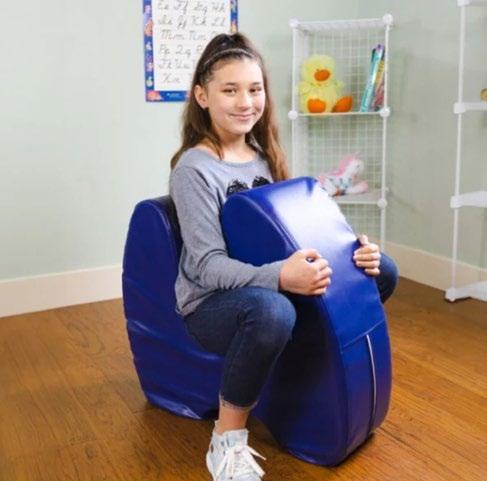
The Lalloo version of a Squeeze Seat offers kids a safe, secluded personal space: great for reducing sensory overload. The design caters to individual preferences, offering options for tight-fitting or oversized seats. It’s just one of several versions for sale at the notfor-profit website Fledglings (www.fledglings.org.uk)
From hoodies to compression vests, there’s a surprising range of weighted clothing to create that portable hug effect. Up until now they’ve been more about their function than fashion, so it’s great to see there’s even a weighted denim jacket available from the UK based company Sensory Direct (www.sensorydirect.com).


Over-ear defenders and noise cancelling headphones are helpful for kids with sensitive hearing. Ear plugs shaped like a tube are relative newcomers and can be more discrete in noisy places.
Popular with sound engineers and teenagers at concerts, they are also used by those with sensory issues. Manufacturers claim they still allow all noises through but soften sounds to make them more tolerable and reduce cortisol levels. Flare Audio (www.flareaudio.com) make a range called Calmer Kids which fit inside the ear.

They may look like typical cuddly toys but these fluffy buddies can also make cute breathing and gentle snoring sounds, thanks to battery operated speakers fitted into their tummies.
It’s common knowledge that our heart rates and breathing speed up when anxiety strikes. Manufacturers of these breathing toys claim they help children to regulate their own breathing as they hug the toy close and start to match the natural breathing rhythm.
Evora (www.evoraofficial.com) were one of the first to create a breathing Koala which has a soft light up belly, a soothing up and down motion to accompany a breathing sound and a heartbeat.
Editor Linda Stone info@familiesmagazine.co.uk
020 8241 0423
Next issue: July/August
Cover image: www.lummi.ai Follow us on social media
www.facebook.com/FamiliesUK www.instagram.com
This product is made of material from well-managed, FSC®certified forests and other controlled sources.
This issue covers so many great topics as we enter the official lead up to summer!
We have the lowdown on trending kids’ party themes as well as some great party game ideas for outdoor or large venue parties. If your child has a party coming up, make sure you have a look.
With the mental health of our children increasingly uppermost in our minds, take a look at eight game-changing products for those who suffer from anxiety.
Should your child take a leaf out of the book of Charli XCX and be a bit more ‘brat?’ Or would you actually prefer a bit less of that? And what does ‘brat’ even mean? Find out in our parenting section.
Browse the top toys for outdoor play this summer, an A-Z of the benefits of swimming and a summer camps guide to get ready for the season ahead. And get to grips with phonics if you have a child starting school this year.
Finally, in this issue, we have no less than four giveaways, including a V-Tech Smart Watch and a Smoby Mud Kitchen! Apply inside. By doing so, you’ll also ensure you receive our digital magazine and email newsletter with lots more content and goodies on offer.
January/February issue giveaway winners Congratulations to all our winners. You can find a list at www.bit.ly/JF25recipients
Families is a franchise of Families Print Ltd of 75 Lisbon Avenue, Twickenham, TW2 5HL. Families is a registered trademark of Families Print Ltd. All franchised magazines in the group are independently owned and operated under licence. The contents of Families are fully protected by copyright and none of the editorial or photographic matter may be reproduced in any form without prior consent of Families. Every care is taken in the preparation of this magazine but the franchise owner and Families Print Ltd cannot be held responsible for the claims of advertisers, nor for the accuracy of the contents, or any consequence thereof.
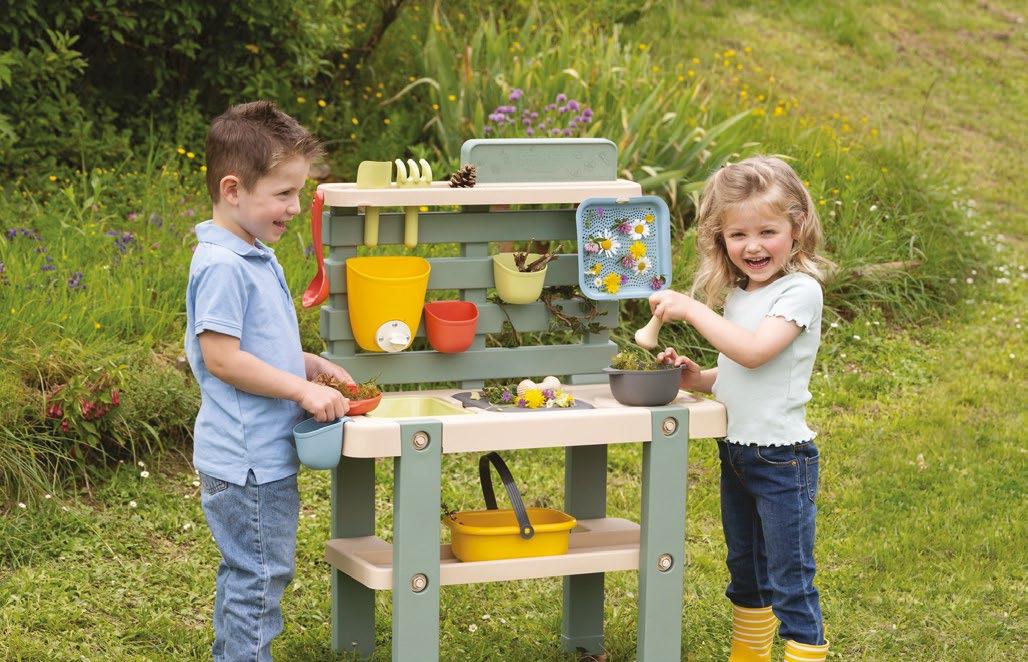
and












By Melanie Sanderson
Navigating the school admissions process can be a daunting task and it’s never too early to start. For selective independents, especially the most oversubscribed ones, you may need to register up to three years in advance to enter the highly competitive admissions process. The state system equally has rigid deadlines that must be followed to secure a place in your school of choice. Here is a lowdown on all the various processes and key deadlines to help you plan ahead.
For state primary schools, the admissions process begins in the autumn term of the year before your child is due to start school. Attend as many Open Days as you can in the year prior as few state schools offer personal tours. Book in early for these –places fill up fast!
The application deadline is usually the second week of January. Primary school admissions are co-ordinated by your local authority which specifies dates and procedures. After submitting your application through your local authority’s Common Application Form, you can expect to receive your school offer notification in mid-April.
Most secondary school applications are also handled via local authorities, with the application process for Year 7 entry running from 1 September to 31 October in the prior year.
Grammar schools may have additional requirements such as registering for entrance tests during the summer term of Year 5 (your primary or prep school will guide you through the process), with examinations from the September of Year 6. Offer notifications are sent at the beginning of March.

As the name suggests, the main aim of prep schools is to prepare pupils for entry to private secondary schools at either 11 or 13. Traditionally, pre-preps take children from age 3 or 4 and prepare them to move to a prep school at age 7 or 8 (usually school year 3 or 4).
All-through schools are seamlessly linked through pre-prep, prep and senior with generally an easier transition between them, reducing the need for further application processes and assessments.
As always, London dances to its own beat. Whereas in more rural areas, it can be a case of putting little Harry or Harriet’s name down and setting up fee payments, competition for places in London’s top schools can be fierce at every stage, meaning the pressure is on.
Parents who wish to tutor their children ahead of 7+ and 11+ assessments should plan at least a year’s worth of tutoring in advance. Be aware the best tutors also have long waiting lists.

Most independent schools have entry points at 3+, 7+ and 11+. Nursery places are in high demand and usually offered on a firstcome, first-served basis (London schools are the exception with some testing at age 3 and 4+) so it’s crucial you consider your options as soon as possible.
For all independent settings your first task is to register your child. The deadline is usually in the autumn of the year before you would like your child to start. There may be a registration fee and a deposit later on to secure your place. Make sure you understand what the agreement involves and under what circumstances you get your money back.
Plan lots of school visits in the year or two prior to when your child would be due to join the school. Open Day seasons are twice a year – usually September/October and February/March and most independent schools offer smaller or even personal tours too.
Melanie Sanderson is Managing Editor of The Good Schools Guide (www.goodschoolsguide.co.uk), which reviews the key components of hundreds of schools, providing parents with in-depth, unbiased insights.

Do your homework and research all your school options as early as possible.
Attend as many Open Days as you can.
Bear in mind schools and nurseries can change quickly, so while it’s sensible to look at Ofsted reports (or ISI for independent schools), if it is some time since a school has been inspected, the grading may not be representative of where the school is now at.
Make a note of all application and examination deadlines and any other key dates.
Ask your child’s current setting for their advice on next steps –they should be very familiar with the process.
Research tutor options and book in plenty of time.
Prepare for financial outlay on registrations if applying to independent schools.
Good sources of further information include your local authority website, www.gov.co.uk or www.goodschoolsguide. co.uk
By Erin Miller
If your child is in Reception, infant school or starting school this year, you’ve likely encountered the term ‘phonics’ or even the more formal Systematic Synthetic Phonics (SSP). Wondering what it all means? Here’s a brief run-down, plus ideas for how you can support your child to learn it.
In short, phonics (SSP) is the evidence-based method used to teach children to read in the UK. The Education Endowment Foundation reports that ‘phonics approaches have been consistently found to be effective in supporting younger pupils to master the basics of reading, with an average impact of an additional five months’ progress.’ It further notes that research demonstrates that phonics is especially beneficial for ages 4 to 7, as they begin the journey of learning to read.
Phonics highlights the relationship between letters and sounds, allowing children to decode words by sounding them out.
SSP begins by teaching individual letter sounds and gradually moves on to blending sounds to form words. By mastering these phonetic skills, students gain the ability to read fluently and accurately.
The first concepts in phonics to understand are ‘phonemes’ and ‘graphemes.’ A ‘phoneme’ refers to the smallest unit of sound in a language. The word ‘cat’ has three phonemes: /c/, /a/, /t/. A ‘grapheme’ is the written representation of a phoneme: the letter ‘a’ represents the /a/ sound.
At the core of phonics is ‘blending’ and ‘segmenting.’ ‘Blending’ refers to combining individual sounds to form words e.g. /c/, /a/, /t/ into ‘cat.’ ‘Segmenting’ is the process of breaking down words into their individual sounds e.g. ‘cat’ into /c/, /a/, /t/.

Here’s a quick overview of some further concepts in phonics which your child’s teacher will be using.
A blend is a group of two or three vowels or consonants where the vowels or consonants retain their individual sounds.
A consonant blend could be: ‘bl’ as in ‘black’ or ‘gr’ as in ‘green;’ ‘st’ as in ‘star’ or ‘nd’ as in ‘hand.’ A vowel blend could be: ‘ea’ as in ‘bead;’ ‘oa’ as in boat and ‘ee’ as in ‘see’.
A digraph is a combination of two letters that together produce a single sound, different from the individual sounds of the letters.
Consonant digraphs include: ‘ch’ as in ‘chair;’ ‘sh’ as in ‘ship;’ ‘th’ as in ‘this;’ ‘wh’ as in ‘white’ and ‘ph’ as in ‘phone.’ Vowel digraphs include: ‘ai’ as in ‘rain’ and ‘oo’ as in ‘moon.’
Finally, a dipthong is a complex vowel sound that begins with one vowel sound and flows into another within the same syllable. E.g. ‘oi’ as in ‘coin,’ ‘oy’ as in ‘soy’ and ‘ou’ as in ‘house.’

Critics believe that an overemphasis on phonics means that comprehension, vocabulary and other aspects of learning to read are neglected. Although phonics is the mandated system for learning to read in the UK, other approaches do exist. If you’re interested in exploring these, a good starting point is to research the Whole Language approach.
The Whole Language approach is a method of learning to read that emphasises immersing students in rich language environments, prioritising meaning-making and comprehension over precise decoding skills, often encouraging students to ‘guess’ words based on the surrounding text and their prior knowledge.
In my opinion, phonics is an excellent starting point for learning to read but benefits from being combined with elements of other approaches. Be aware that many people (especially online) feel very passionately, both for and against different methods! As ever, all approaches have their pros and cons but remember that phonics is proven to work.
Erin Miller is a teacher with a keen interest in how research can be used in the classroom to improve learning.

If you’re looking to support your child’s phonics learning at home, flashcards are very useful. I have a preference for the physical cards but there are also apps available. Use the flashcards to practise sounding out the letter combinations. For books to support phonics development, the classic Usborne Phonics Readers are a reliable place to start. Keep an eye out for them in your local charity shop or find them in most bookshops or online.
Songs can also be fun and foster phonics development. A quick search on YouTube will yield far more results than you’ll have time to get through!
There are also board games and card games that have been adapted to help support phonics learning. The list of these is extensive, so have a look online and see what appeals most to your family.
Finally, if intervention is required, consider using online phonics programmes. There are many available, some free of charge but it is best to see which is recommended by your child’s school.
By Usha Patel
Is your child upset in the mornings on school days? Are there constant complaints of stomach ache, crying and other bogus illnesses? And, in contrast, are weekends and holidays trouble-free? A trip to the shopping centre, to the Lego shop or popping over to gran’s for a cuppa - nothing is too much bother and there is little or no resistance. You may find that at weekends less sleep is required and to your surprise, your child is up an hour earlier and ready to take on the day.
Then there is your dread on a Sunday night because Monday is looming. It is back to the troubles of the week before.
You may be struggling to understand why your normally chatty and curious child has such an aversion to school. You think about this, worry about it. You may google ‘has my child got dyslexia?’ or ‘what is neuro-divergence?’
Convinced your child has some sort of learning difficulty?
I want to say: please hold on!
I understand you are desperate to help but your child may be too young to be diagnosed (a diagnosis is not possible until age 8 in the UK). The school keeps saying everything is fine, there is loads of time but you are not convinced. That seed is now growing into a small tree and you see a forest on the horizon. You see the Oxbridge option evaporating in front of your eyes and each day compounds your fear.
So what?
Did you know Albert Einstein, Thomas Eddison and Steven Spielberg all had some sort of dyslexia or neurodivergence? What about Jamie Oliver, Tom Cruise, John Lennon and Pablo Picasso? Yep, them too!
As time goes on, the world of work is learning that people who do not fit the ‘typical’ way of thinking are actually the gems they want to employ. In a world of machine learning and artificial intelligence, your child will stand out as having valuable and unique processing skills that mark them out from others in a good way. The sort of special processing skills even the smartest computers will not be able to learn for themselves.

Keep your child happy by celebrating and praising their strengths to help them engage. Everyday activities: sports, baking and art all develop essential skills. Ensure they can work in sequence, as this impacts learning and daily routines. You may notice struggles with sequencing their thoughts in morning routines or problem-solving. Focus on teaching structured steps early; sustained attention is key. Measure their focus on tasks like games or chores and gradually extend it. Consistency and repetition can create new neural pathways and free up memory capacity.

The best thing you can do is keep your child curious to learn
Learning is not solely about what your child takes in via reading. It can take many different routes; from talking to people to going to museums and seeing things that spark interest, even watching YouTube videos. If your child doesn’t choose reading, it does not mean they do not like stories. Reading to your child or listening to an audio book is just as valid.
Prompt your child to write down their ideas and when you read them, do so without picking out the spelling mistakes. Allow them to use your phone to record their ideas and then you can write them down or they can listen and write them slowly for themselves.
Focus on the value of their ideas and thoughts and overlook the mistakes. By nurturing curiosity, you are allowing your child to flourish. This is not to say you do not help them with their spelling, grammar and punctuation but being too strict about these will damage their self-esteem.
Usha Patel is a Neurocognitive Therapist at Raviv Practice London (www.ravivpracticelondon.co.uk).
Sign up at familiesmag.co.uk/go


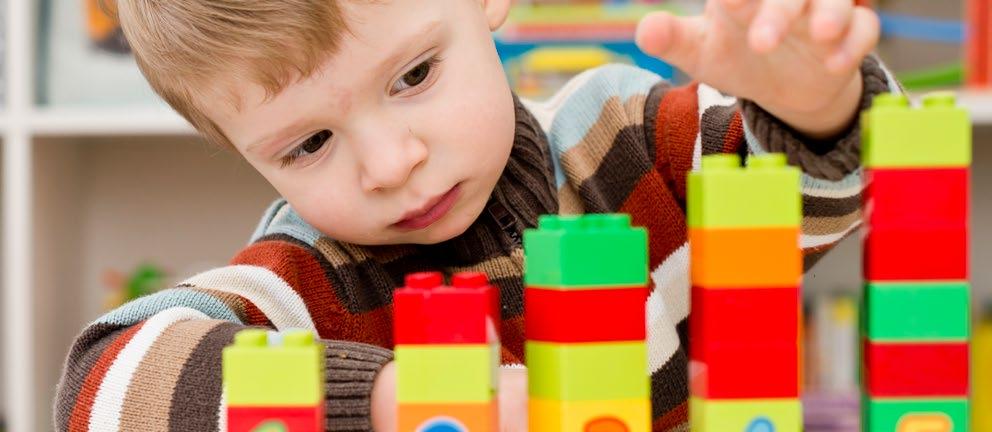
Encourage movement - it boosts learning. Young children aren’t built to sit still for long, so integrate activities like playing catch while spelling. Movement sharpens focus and retention.
Understanding working memory is crucial; strong working memory aids reading, maths and daily tasks. Test and strengthen it through memory games, repetition and structured routines.
Everyday skills like setting the table help develop focus and accountability. Small, purposeful actions reinforce cognitive growth, making learning smoother and more enjoyable. Sign up to our newsletter
By Zuzu Jordan
For some children, writing feels like a chore rather than an enjoyable or meaningful activity. And when AI apps generate text instantly, there’s definitely a disincentive for the less inclined to develop writing skills. So how do we inspire a love of writing and encourage young minds to pick up a pen? Firstly, children engage more when they understand the purpose of writing; whether to entertain, persuade, inform or recount.
They also need a topic they care about. First-hand experiences help generate ideas. For example, if writing instructions for making a sandwich, they should make one first. Family outings also provide excellent material for writing, making it more personal and enjoyable.
Providing strong text examples helps children recognise the key features of different genres. Showing them formal letters teaches layout and language expectations for these, while a nonchronological report follows a different structure. Understanding the genre builds confidence and improves writing.
Discussing the target audience and purpose also increases motivation. For example, children writing to their headteacher to request longer break times will be driven to craft a strong argument! Knowing their writing could create real change makes the task more meaningful and engaging.
Receiving a response can definitely boost confidence and enthusiasm. Even Sir David Attenborough has replied to children’s handwritten letters! It’s useful to research potential recipients in advance so your child is engaged with the writing activity. A child studying volcanoes could write to a volcanologist; one learning about environmental issues could contact WWF or Greenpeace.
Reading work aloud helps with editing and highlights areas for

Writing about history can be challenging as children cannot experience it directly.
Pictures, videos and artefacts help bring history to life. Organisations like Time Capsule Education (www.timecapsule.education) offer immersive resources that go beyond surface-level writing. A child asked to write as a Roman boy or girl without stimulus will produce weaker work than one who has handled artefacts, engaged in role play and watched enactments.
Reading historical texts like Beowulf and making crosscurricular links further develops ideas. Visiting historical sites and taking part in interactive activities enhances writing, while keeping a digital diary provides prompts.
A blank page can feel daunting, so sentence starters and word banks help kick-start writing. Surprisingly, computer games can aid the process by offering detailed settings that inspire descriptions. Access to a thesaurus, online or in print, encourages varied vocabulary. By combining research, experiences and creative tools, children can produce richer, more engaging historical writing.

improvement. It also allows children to celebrate their efforts, particularly when writing to entertain. Positive feedback from peers and adults further builds confidence, making writing more enjoyable and rewarding.
Opportunities to showcase children’s writing can make it more meaningful for them so submitting work to school newsletters, local newspapers or writing competitions can deliver a sense of accomplishment. At home, sharing stories with family members or displaying work reinforces the importance of their efforts.
Creative approaches including storytelling games, comic strips or collaborative writing exercises can make writing fun, while encouraging journalling allows children to express their thoughts freely, improving their skills without pressure.
Fostering a love for writing requires purpose, engagement and encouragement. With the right support, children should be able to see writing as more than a school task and enjoy it as a tool for creativity, communication and self-expression.
Zuzu is a Mastery for Maths Specialist who has taught primary for 18 years and is director of Arnett International. For free resources and tips, find her on Instagram edumate_uk

Finding spelling challenging can discourage children from putting ideas on paper. Some even rewrite sentences to avoid difficult words. To overcome this, explain that their first draft is not the final version and introduce editing using a different coloured pen to show changes. This will help them see improvement over time. Encourage children to attempt tricky words, underline them and check a dictionary later to build independence.
Using a mini whiteboard allows children to erase mistakes easily, making writing feel less daunting while providing topical vocabulary supports their spelling and boosts confidence. Writing with peers can make the process feel collaborative rather than isolating and encourages children to share ideas more freely. Reading back their work aloud can also help them spot mistakes and refine their writing.
Writer’s block often stems from pressure to complete tasks quickly. Mind maps allow children to brainstorm without structure, creating a pool of ideas to draw from when stuck. Breaking writing into smaller steps makes it more manageable, helping children approach it with confidence.
By Emilia Orviss
Outdoor play is essential for children’s development. It not only provides a healthy break from indoor routines but also offers numerous benefits that contribute to their holistic growth. Here is a selection of top-rated outdoor toys from the Good Play Guide. Each guarantee fun while also helping children to learn and grow in different ways!
Ages 1-4
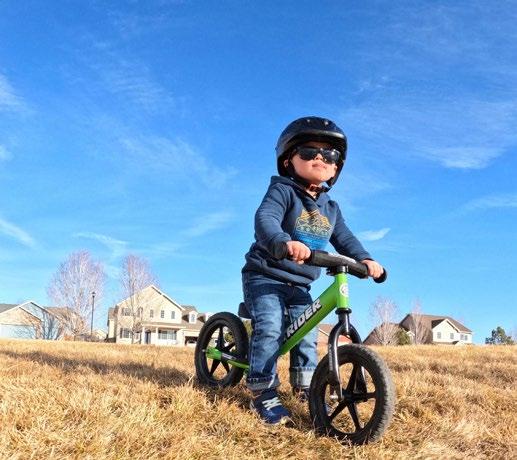
A durable balance bike with a robust yet lightweight steel frame and puncture-proof foam rubber tyres. The mini-grips are tailored to fit little hands perfectly, helping children develop balance, co-ordination and confidence while they ride. £114.99.
Outdoor play can develop stronger muscles, improve co-ordination and build healthy hearts. Running, climbing and jumping are great for boosting fitness and reducing the risk of health issues later on.

A lightweight, inflatable ball perfect for the park, beach or garden. For added fun, children can colour in the unique cover, turning it into a personalised toy. Easy to pack and take anywhere, Ollyball guarantees lots of active play and fun for children of all ages. £16.
Ages 2+


A versatile table that allows children to explore water and sand using two sturdy play bowls. The wooden tabletop easily fits over the bowls, converting it into a standard picnic table for snack time or other activities. Offering endless opportunities for sensory play, the table also encourages social interaction as children gather around and play together. £129.99.
Being outside sparks curiosity and encourages problemsolving. Nature inspires children to think creatively, explore and discover decisionmaking skills.

Classic Swingball is a great way to keep kids active and enjoy a fun, fast and furious game without having to ask the neighbours for their ball back! With a tethered ball attached to a spiral head and sturdy base, the aim is to reach the top or bottom first. Complete with two lightweight bats, it’s perfect for competitive outdoor play. £29.99.
Ages 3+
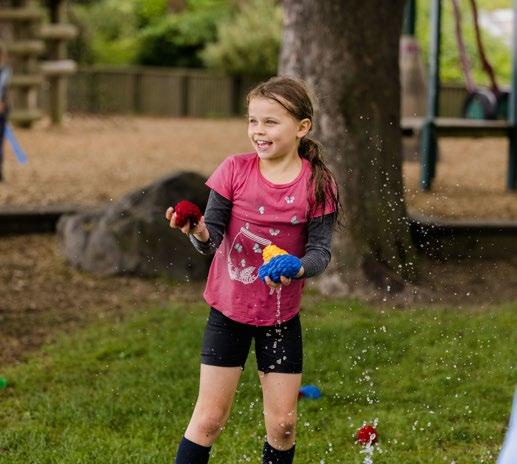
This innovative and awardwinning seesaw not only goes up and down but also spins 360°, with clever counterbalancing so kids of different weights can play together. Height-adjustable and with padded ball seats for comfort, it’s perfect for years of fun. £129.99.
When playing outdoors, children learn to share, take turns, solve disagreements and work as a team - all essential for making friends and building relationships.

A unique toy that lets children create 3D geometric shapes like cubes, hexagons and pentagons using rods and connectors and suspended bubbles that vary in size, depth and shape. This innovative kit encourages creativity, problem solving and fine motor skills. Ideal for fun and engaging, outdoor handson learning. £13.
Ages 3+
EcoSplat Reusable Water Balloons
With EcoSplat Reusable Water Balloons, kids and teenagers (and adults!) can splash and play all afternoon - no refilling hassles, no tricky tying and no rubbish to clean up. Developing hand-eye co-ordination and encouraging physical and imaginative play, these fun balloons make water fights longer, mess-free and better for the planet! £14.
PLAY
EMOTIONAL WELLBEING
Being free in calming, natural surroundings reduces stress.

National Geographic Junior Metal Detector
A lightweight, easy to use tool perfect for young explorers. Its adjustable design, waterproof coil and multiple detection modes make treasure hunting both fun and educational. Ideal for parks, woodland walks and beaches, it promotes curiosity while boosting problem solving and concentration. £49.99.
By Andrew Campbell
Summer holiday camps, courses and workshops are not only an ideal way to fill in childcare gaps during the long summer holiday but also offer the opportunity for your child to discover a new hobby or take their existing passion to a new level.
Multi-activity day camps. These camps offer a diverse daily schedule of sports and creative activities, with multiple sessions lasting one hour to ninety minutes. Ideal for kids with varied interests, they generally feature sports, arts and craft, outdoor exploration and games. Camps offer flexible booking options, including single days, half days, full weeks, extended hours and multi-week discounts
Sport/single activity camps or workshops. Sport and single activity camps or workshops are perfect for kids keen to focus on specific interests, including sports, creative arts, performing arts or STEM. These programmes, running from a day to two weeks with sessions lasting two to five hours a day, often wrap up with performances, games or project showcases. They cater both to experienced children seeking expert coaching and newcomers curious about trying something different, offering immersive experiences to enhance skills, boost confidence and ignite enthusiasm.
These camps or workshops offer expert guidance for passionate children and valuable insights for those exploring new interests. They foster personal growth, help children meet like-minded peers and provide enriching holiday experiences.
Out of the ordinary. Traditionally themed camps or workshops are great but there’s a world of unique activities waiting to spark curiosity and creativity too!

Use your tax-free childcare. Families can receive up to £2,000 annually per child or £4,000 for a disabled child, to help with childcare costs, including approved holiday clubs. This support is available for children up to age 11 or 17 for those with disabilities. Don’t miss this opportunity to ease your childcare holiday club expenses.
Take paid or unpaid leave. You may find that if all else fails you will need to use your annual leave. If you don’t have enough paid leave then you have a statutory entitlement to ‘parental leave’ which allows up to eighteen weeks unpaid leave per child until they’re 18.
Team up. In addition to grandparents, consider teaming up with friends to cover certain days and reciprocate in a shared arrangement.
Share a nanny. Sharing a nanny with other families is called a nanny share, where multiple families use the same nanny. The nanny may care for all children at once or split time between families.

How about a circus skills workshop? Children can learn juggling, tightrope walking and acrobatics in a fun and energetic environment. It’s not only entertaining but also improves balance, co-ordination and confidence. For something out of this world, sign your child up for a space and astronomy camp. Through telescope sessions and hands-on experiments, children can discover the wonders of space while developing a passion for science. Your budding chef could even take their culinary prowess to the next level at the surprising range of cooking camps available across the country.
Why not consider a residential camp to develop independence, social skills and confidence? Short-term stay options, such as Tryout Camp (www.summercampstrust.org/tryoutcamps-2025), operated by the Summer Camps Trust in Worcestershire, make it more manageable and affordable for both parent and child. Or the entire family can experience camp life at Summer Camp, a series of nature-based micro-festivals organised by The Good Life Society (www.thegoodlifesociety. co.uk) at Flintshire’s Hawarden Estate.

If your child is reluctant to enrol in a summer camp, course or workshop, it’s important to approach the situation with patience and understanding.
Start by listening. Understanding what makes them anxious, whether it’s meeting new people, fear of failure or unfamiliar settings, can help you address those fears effectively.
Offer choices. Let them explore activities that match their interests. Whether it’s football, painting or drama, feeling in control can reduce anxiety and spark excitement.
Take it slowly. Talk to the camp provider in question about whether your child can observe activities they are not sure about, before deciding whether or not to join in.
Model confidence. Your own attitude can play a big role. Show enthusiasm and positivity about the activity. Children often pick up on their parents’ emotions and a confident approach can help them feel more secure.
Celebrate effort, not outcomes. Offer praise for participating, regardless of results. Building their confidence step by step will encourage them to keep trying.
By Jodie Herron
Planning a memorable birthday party for your child is extra special when you alight upon a theme that resonates with their interests and sparks joy. Looking for inspiration? Here are eight trending party themes for children ages 5 to 13, each designed to create an unforgettable experience.

Inspired by the hit Australian TV show, fill your Bluey-themed party with vibrant decorations, engaging games, piñatas, blue and orange balloons, banners, cardboard cutouts and character-inspired activities. Set up a backyard obstacle course or scavenger hunt inspired by the show’s adventures, host a ‘keepy uppy’ balloon challenge and provide themed party bags for a true Bluey experience!
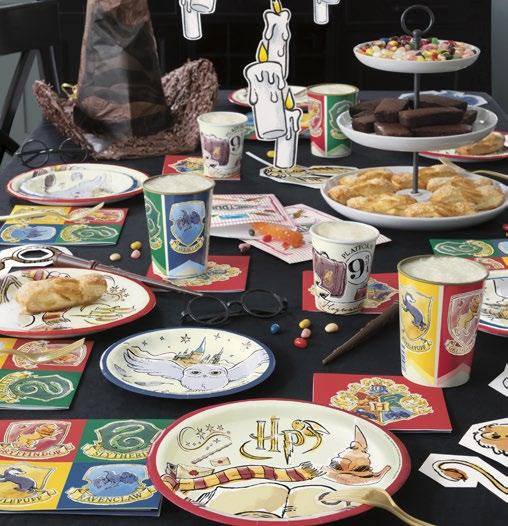
Bring the magic of Hogwarts to life with house banners and themed table settings. Sort young wizards into houses with a Sorting Hat ceremony, then let them mix bubbling potions with colourful drinks. Organise broomstick races for a Quidditch match, set up a wand-making craft station and lay on wizardthemed treats like chocolate frogs for a spellbinding experience.

A dinosaur-themed party would be perfect for young palaeontologists! Transform your home into a prehistoric jungle with lush greenery, dinosaur cutouts and dino footprints leading the way. Set up a ‘dino dig’ sandpit for fossil excavations, organise a thrilling dino egg hunt and plan adventurous games like a T-Rex relay race. Complete the experience with dinosaurthemed treats, tableware and roaringly good party bags!

Create an adventurous jungle atmosphere with vibrant hanging vines, inflatable animals and tropical leaves. Offer animal face painting and safari hunts to excite young explorers. Provide explorer hats, binoculars and maps for a scavenger hunt featuring hidden animal figures. Serve jungle-themed snacks such as ‘monkey bananas,’ ‘lion cupcakes’ and ‘snake pretzel sticks’ for a wild experience little ones will love!


Create a dreamy Coquettethemed birthday party with soft pastel decor, lace accents and vintage charm. Set up an elegant tea party with paper tea cups, floral tablecloths and tiered trays of sandwiches. Offer a DIY flower crown station, necklace crafting and dainty fan decorating. Just add fairy lights, classical music and ribbons for a whimsical, refined celebration!
Roll out the red carpet for a dazzling, glitzy Hollywood-themed birthday party. Decorate with gold stars, movie reels and spotlights. Encourage guests to dress as their favourite movie characters and set up a photo booth with fun props like sunglasses and feather boas. Host Best Dancer, Best Actor or Best Costume awards ceremonies, complete with mini awards.

Throw the ultimate Barbie party by transforming your home or venue with pink décor, shimmering backdrops and chic costumes! Set up dressup stations with tiaras, tutus and glam accessories. Kids can enjoy DIY jewellery making, a mini runway show and Barbiethemed games. Complete the celebration with a stunning Barbie cake, themed tableware and stylish party favours!

Throw the ultimate gamingthemed party for young gaming enthusiasts, with decorations inspired by popular games like Minecraft, Super Mario or Fortnite. Think pixelated banners, gaming posters and themed tableware. Set up gaming stations, host building challenges and organise a treasure hunt with game-related clues. Kids can craft their own pixel art, enjoy gaming-inspired face painting and compete in mini-tournaments. Complete the celebration with a game controller cake and party favours like stickers, keychains and gaming-themed treats!
Each of these themes offers unique opportunities to create a magical and memorable birthday celebration tailored to your child’s interests. For a comprehensive selection of party supplies and decorations to bring these themes to life, explore the full range of themes at www.partyrama.co.uk
By Tamsin Ryan
If you are hosting a party outside, then it’s a great excuse for planning lots of fun and energetic outdoor party games to tire the kids out! Most of the games below would work equally well in a large indoor venue too, such as a church hall or a gymnasium. If you are somewhere you don’t know well, then do a quick recce to check the area for any hazards before you start the games. If outside, be clear where the children are allowed to go and where the boundaries are and make sure they know not to talk to strangers.


You can hire Giant Jenga or you could buy it second hand. You can find the rules of play online.

Each child ties a balloon to their ankle with a piece of string (about 50cm long). While the music plays, the children walk around trying to burst the other children’s balloon and protect their own. The winner is the last child left with a balloon intact.


Split the children into teams and give each team an equal number of ‘stepping stones’ (these could be something like placemats from IKEA). The children have to work together in their teams to get from one side of the room/field to the other, just stepping on the stepping stones.
Reasonably cheap to purchase, this is a team game. If you have a large number of children you may want more than one set of boules. Find the rules online.

At one end there is a basket for each team. One at a time each child has to run to the basket, put all the clothes on and then off again and run back and tag the next team member and so on. You could also do this in fancy dress outfits, particularly if it’s a themed party.
Form two teams. Divide the room or outdoor space into two halves. Each team hides a flag in their half and also has a ‘jail’, which could be a hula hoop. The aim is for each team to try and grab the other’s flag. If a child from one team enters the other team’s half of the field and gets tagged, then they go to ‘jail’ and have to remain there until one of their team members tags them. The winning team is the first one to capture the opposition’s flag.

Each team stands in a line and passes the balloon from the first child down the line to the last child. The first child passes the balloon through their legs, the next passes it over their head and the next through their legs and so on.

One child (the batter) has a tennis racket and must stand with their feet together and not move. The other children bowl a tennis ball and try to hit the batter’s legs below the knee and the batter has to try to hit the ball away, so the ball doesn’t touch their legs (without moving their feet). If the batter is hit below the knee or the ball they hit is then caught by one of the other children, then the batter is out.
Find lots more ideas for children’s parties, as well as advice and details on party suppliers on Tamsin’s blog at www.icecreamandjelly.com
By Juliet Richards
For those of us of a certain age, the answer is probably a very strong ‘no’! Classically, a ‘brat’ is an ill-mannered and annoying, probably spoiled and selfish, child. Pretty much the antithesis of what we’re aiming for as parents.
But recently, the word ‘brat’ received a new official definition from Collins Dictionary as someone ‘having a confident, independent and hedonistic attitude.’ Charli XCX, the singer who initiated this definition describes a ‘brat’ as someone who is ‘honest, blunt and a little bit volatile.’ This is worth considering… Confidence – as in a healthy belief in one’s self and abilities as a valid and worthwhile individual, gets my vote. Independence too when it means being self-reliant, emotionally, socially and physically. And maybe even financially! But hedonistic? A desire to enjoy yourself seems a welcome goal for young people who feel pressurised, anxious and concerned about their future. We need a level of pleasure in order to thrive. But hedonism suggests a belief that enjoying yourself is the most important thing in life. What about all the other values we hope to pass on to our kids – like caring for others, working hard or contributing to society – that are not always enjoyable things to do in the moment?
Next, what about honesty? At face value, we want our kids to tell the truth. But there are some very useful ‘mistruths’ that we want our kids to recognise and manage appropriately too. Things like ‘thank you for the lovely jumper, it’s a great colour’ when actually you hope you never have to wear it! Let’s take blunt. I’m pretty sure Charli doesn’t mean not having a sharp edge or point or being dull or obtuse. I’m sure she’s in the forthright, candid and straightforward camp of blunt. This takes me towards being assertive. Feeling comfortable expressing your opinions, standing up for your beliefs and challenging people or issues

that conflict with your firmly held standards, is something we want for our kids. But in a way that also respects others’ views and feelings.
And finally volatile. Being unstable, explosive and inflammatory isn’t good anywhere for anyone, unless in a chemistry lab under supervision! The reality is we’re all at risk of erupting unexpectedly at times. It’s good that kids learn that this is okay if we also try hard to recognise the early warning signs and take steps to avoid hurting ourselves or others. I wonder whether there’s an idea in ‘volatile’ about spontaneity, taking others or ourselves by surprise from time to time, doing something different just for the sake of it and experiencing a moment of pure joy. That’s not such a bad thing, surely?
So maybe a bit ‘brat’ is the way forward. Helping children develop confidence and independence, learn how and when to be honest, blunt or volatile and work out how to get the level of pleasure in their lives right, takes time and insight, from a trusted and loving parent, family member or carer.
Juliet Richards is founder of The Parent Team (www.theparent. team), parenting educators offering classes and workshops teaching evidence-based parenting skills and offering parents practical, effective support.




Let kids do things for themselves, even when their way of doing things isn’t going to work first time. Acknowledge their effort and express pride in their progress. Trial and error is a great teacher!
Allow them to express their feelings and desires. Encourage them to have fun, in their own way, on a regular basis as a counter-point to all the things they have to do that don’t give them much pleasure.
Show them how to be assertive without putting other people down, by the way we speak to them and others. Have regular conversations about our values – including the complexities of honesty.
Accept they may need or want to break out from time to time and do something new or different.
Here’s a thought… why not talk to your children about their definition of the different aspects of ‘brat’? The dictionary definition is too basic. Let’s introduce some nuance and put the best bits of ‘brat’ into action at home!
By Catherine Loble and Lisa Wander
Childhood innocence is characterised by an unfiltered view of the world, an ability to find joy in simple things and a natural trust in the goodness around them. This untainted perspective is not only heartwarming, it is essential for a child’s development.
However, many children will experience sadness, grief, fear and disappointment, some earlier and in greater measure than others and it cannot always be avoided. The global pandemic was a compelling reminder that no child is exempt from difficult emotions and experiences. So how can we preserve childhood innocence in our unfiltered world?
Spanning birth to adolescence, childhood is characterised by growth, discovery, learning and the development of physical, emotional, social and intellectual abilities. This fleeting, magical phase of life is brimming with curiosity, innocence and joy, a time when imagination knows no bounds. Yet, in today’s fast-paced, digital-first world, preserving and fully enjoying childhood has become increasingly challenging.
We are all so busy and our children’s lives reflect that, with long school days, extracurricular activities, playdates and a constant stream of entertainment and stimulation. Childhood flashes by and before we know it, they are teenagers immersed in the world of social media, their innocence long gone.
Modern day life ‘dictates’ that we need to provide our children with constant stimulation, structured activities, the latest toys to enhance development and even start them at a nursery as babies in order that they develop social skills. Consequently, from a very young age, our children are in a relentless routine, within which the essence of childhood is lost.
The good news is that there are many ways to step off this treadmill and allow our children to thrive and enjoy their childhood without the continuous tedium of busy schedules.
Whilst some extracurricular activities are fun and beneficial, be mindful of overscheduling. Choose one or two which your child enjoys and strike a balance between structured activities and free time. Childhood is the perfect opportunity

The simplicity of childhood innocence allows children to experience life’s joys without the weight of adult worries. Innocence allows children to develop trust and form healthy emotional bonds.
An innocent mind is a creative mind. Seeing the world with fresh eyes fuels imagination and creativity, essential traits for problem solving and innovation.
Innocence is closely linked with children’s sense of right and wrong. Protecting their innocence helps in developing a strong moral foundation, guiding them to become kind and ethical adults.

to cultivate curiosity through unstructured play which in turn fosters creativity, problem-solving and emotional resilience, for example building forts, role play, exploring nature and outdoor adventures.
Protect your child’s innocence while teaching resilience: children are born innocent and with that innocence comes trust. Whilst we should strive to shield our children from unnecessary stress or the severity of the grim news which dominates our world, it’s equally important to equip them with age–appropriate tools to navigate challenges and deal with disappointment and the world around them.
By monitoring and filtering their media exposure, we can create and foster a safe environment where our children feel comfortable to talk.
Children often emulate adults so where possible model enthusiasm for life to inspire your children to embrace it with joy and curiosity. Be mindful of how you talk about the world around you and manage your own emotions and fears without amplifying your children’s worries.
Preserving and enjoying childhood is as much about us as it is about children themselves. By being present, creating nurturing environments and encouraging exploration, we can help children savour and enjoy their youth while still preparing them for their future adult life. These formative years are a gift to be cherished, protected and celebrated.
Lisa and Catherine are co-founders of Emparenting (www.emparenting.co.uk), supporting children, parents and families with the insights, skills and tools needed to nurture the development and well-being of the next generation.

Appreciate, value, actively listen and participate in your child’s interests. Simplify explanations - provide simple, truthful answers to questions. Avoid overloading with too much information and keep adult topics for adults.
Weave and create special memories of time spent together. Step into nature and explore the world together.
Maintain a joyful environment. Laugh together and share spontaneous fun. It feels great and strengthens bonds. Ensure limited, age-appropriate and monitored screentime.
Athleticism – swimming is a dynamic, action-based and highly athletic sport. Once a child develops such athleticism, it can be transferred to other sports too.
Belief – swimming is a great confidence builder, helping children become body confident and develop belief in their athletic abilities, social skills and their teamwork.
Competing - once they have learned to swim proficiently, many children enjoy the excitement of competing for better strokes and faster times, either with themselves or with others.
Discipline – discipline is required for children to become good swimmers. They may have to dedicate more time to the pool and give up other activities in order to improve but they will also benefit from the rewards of this.
Equilibrium – swimming is great for mental health and mood balancing, as well as improving body balance.
Floating – floating is a peaceful activity which lower bloods pressure as well as stress-related neuro-chemicals, inducing your mind and body into a state of calm.
Great fun – being a confident swimmer means your child will be able to take part in a huge range of FUN activities like splashing about in the sea, kayaking, sailing or going to water parks.
Healthy – swimming is great for the heart and circulation, provides natural, low-impact resistance for building muscle and helps release endorphins which make you feel happy.
Inexpensive – swimming can be an inexpensive hobby. Pool fees are generally low and you can also swim free in the ocean and other appropriate bodies of water, with the right precautions. Joints – water provides natural support and resistance which helps develop strong joints.




Keeping going – swimming builds your kids’ muscles and lung capacity, allowing them to swim for longer. This, in turn, builds their mental endurance.
Life-long - those who learn to swim during childhood are more likely to continue swimming as adults, offering life-long physical and mental health benefits.
Movement – kids who live active lives are happier, healthier and smarter because they keep blood pumping through their bodies and brains - essential for development in children.
No off-season – swimming can be enjoyed regardless of weather or season.
Outdoor swimming – what better way for your child to experience the great outdoors than diving into great bodies of water?
Playing – swimming is a great opportunity for children to meet and play with others from different backgrounds and schools. Playing is an important part of children’s social development which teaches them to accept differences, be assertive and develop empathy.
Qualifications – children can make progress and earn medals and certificates. They can even enter competitions or qualify for a squad. This boosts self-esteem and confidence.
Relaxation – equally, swimming doesn’t have to be about competing or even about pushing hard to get fitter. The soothing environment of the water is relaxing and can promote a sense of tranquility and calmness.
Safety – because safety is an essential part of learning to swim, children learn to be safety-conscious and aware of hazards. Being able to swim is a skill that your child will use to keep safe throughout their life.
Training – to become a competent or advanced swimmer, training is essential, providing your child with a routine to follow and an understanding of how following that routine leads to competence.
Underwater – not only is it fascinating to swim underwater in the ocean, needing to hold their breath means swimming underwater can also increase a child’s lung capacity.
Vitality – swimming’s benefits for physical and mental wellbeing mean your child will grow up with vitality.
Water sports – swimming can be a gateway to a wide range of sports like diving, surfing, water-skiing and scuba-diving.
Xtra benefits – unlike some other sports, swimming is lowimpact and provides more resistance than dryland exercises. This means that less stress is placed on joints and muscles and children are therefore less likely to suffer an injury.
Younger longer – this won’t be an incentive for your child but one interesting fact about swimming is that, by improving muscle mass, lung function and brain health, swimming can help you stay younger for longer.
Zeal – aka commitment, dedication and enthusiasm! All three will necessarily be present if your child progresses well as a swimmer.
Constipation is common at all ages and can be treated at home by putting some simple changes in place for your toddler.
What does constipation look like in a child?
Pooing less than three times a week. When they do go, their poos may be large, hard or lumpy and harder for them to push out.
Your child may may avoid going to the toilet, be tired and lack energy.
Your child may soil his/her clothes. This happens when there is a large amount of hard poo trapped at the end of their bowel. Fresh poo leaks out around it.
If your child is toilet trained but soiling regularly, see your GP for an examination.
Causes of constipation
Constipation in toddlers can have many causes. Sometimes there’s no obvious reason. It could be not drinking enough water; not enough fruit and vegetables; change in routine (starting nursery); potty training or resistance to it or fear of the toilet.
What to do
Of key importance for healthy bowels is to drink enough. Six to eight cups of water, well diluted fruit juice or sugar-free squash a day is recommended. Avoid drinks containing caffeine and fizzy drinks.
A balanced diet including fruit, vegetables and cereals, helps keep the bowel healthy. These foods keep fluid in the poo so it’s easier to pass.

Encourage your child to sit on the toilet fully clothed with the lid down for brief periods to help them see that the toilet is a safe place.
Give lots of praise and encouragement. Once they’re okay with this, repeat with the lid up, then take off the outer layer of their bottom clothing, eventually removing pants. Don’t worry if they don’t poo – the aim is to get them to feel happy on the toilet.
If they’re still in nappies, start by loosening the tabs, before progressing to removing the nappy. Letting the nappy lie in the toilet bowl can help (remembering to remove it before flushing), as can putting toilet paper in the bowl first to reduce any splash.
Provide a step or stool to help your child get onto the toilet and have a book or toy for them to play with. Some children benefit from having something weighted on their laps when on the toilet, such as a hot water bottle or folded blanket.

Keeping active helps get the bowel moving. Running around at the park, playing in the garden or around the house can all help!
Having a good toilet routine is really helpful. Get your child to sit on the toilet or potty around twenty to thirty minutes after eating. Make it relaxed and fun and praise them for sitting there, whether they poo or not.
A good sitting position on the toilet is important. Support your child’s feet on a box or stool so their knees are above their hips. To push out a poo, we need to be relaxed, so play with your child to help them. Laughing and blowing bubbles help them use the muscles that push out the poo.
Finally, ask your child if they feel worried about using the toilet; it might be that they don’t like the toilets they use regularly, e.g. at nursery or that something has changed which is upsetting them.
Remember that your child isn’t constipated or soiling deliberately so stay calm, relaxed and reassuring. Your Health Visitor can give you additional advice and guidance.
For more information, visit www.healthforunder5s.co.uk

The government has launched a campaign to promote a new home learning environment for early years’ learners.
The Department for Education and Department for Health and Social Care’s Start for Life Little Moments Together campaign aims to educate parents and carers about the importance of brain development in the first five years of a child’s life and the crucial role they play.
Its goal is to help caregivers better understand how their baby communicates and how to build a secure, loving connection. Experts emphasise that mental health plays a significant role during the critical first 1,001 days of life, shaping a child’s overall well-being.
Parents can now access resources, including the Start for Life website and family hubs, to receive trusted advice. By focusing on connection and understanding, this campaign seeks to replace outdated advice with support that truly nurtures every child’s potential.
More info: www.nhs.uk/start-for-life/early-learningdevelopment
You will need:


Wooden pallets x 4

Bricks

Plastic bottles*
Bamboo canes
Place a wooden pallet in your chosen location. On top of the pallet, line bricks around the corners and across the middle.

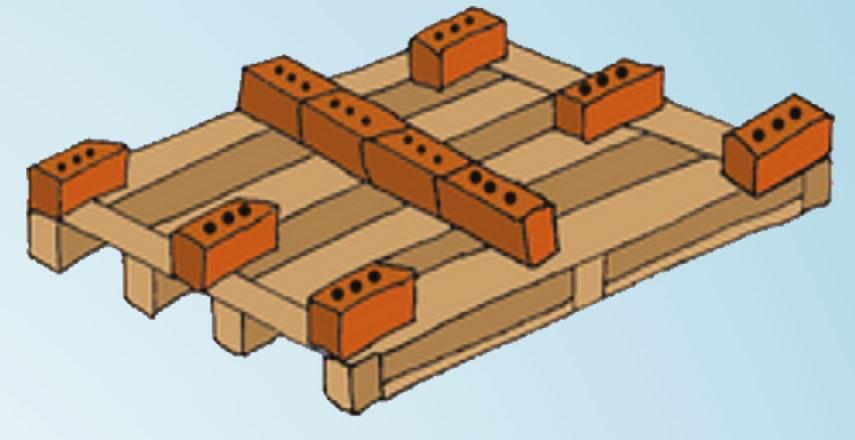
Place your next pallet on top of this and repeat the process for all of your pallets.
Straw
Leaves
Tiles


Cardboard

Stones/pebbles

Twigs/loose bark
* Use old plastic bottles for this and always recycle after use.






Cut off the top of twothirds of your bottles. Fill up half of them with bamboo canes and the other half with rolled up cardboard. Place these inside the hotel.



Fill in the remaining spaces with bricks, leaves, pebbles, stones, tiles, loose bark and straw.
Add in any extra materials that you want to recycle e.g. old pipes, carpeting, toilet tubes, old plant pots. Be creative - add a welcome sign or give your hotel a name!


